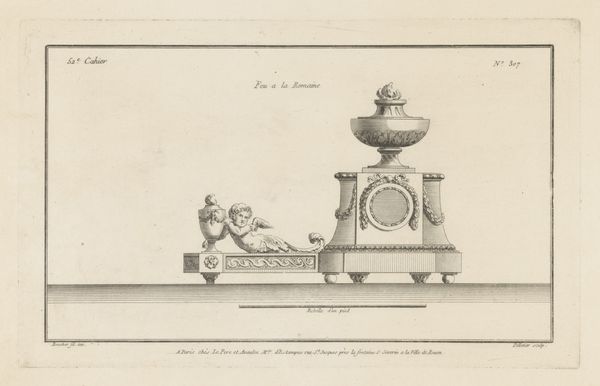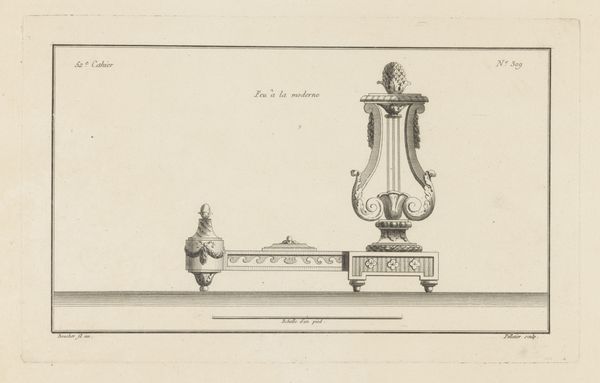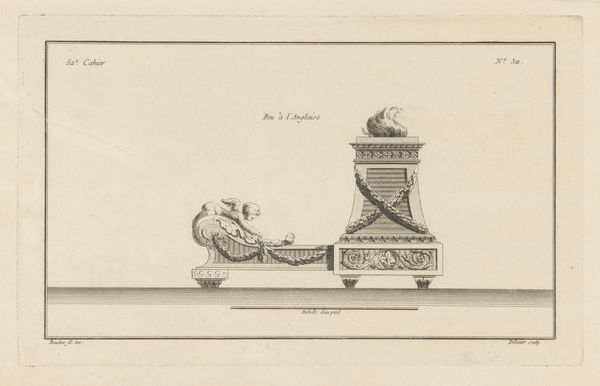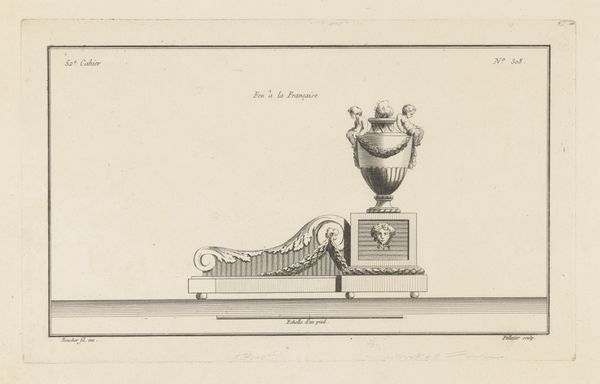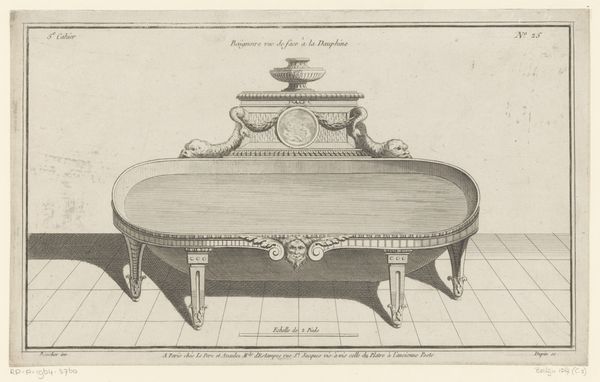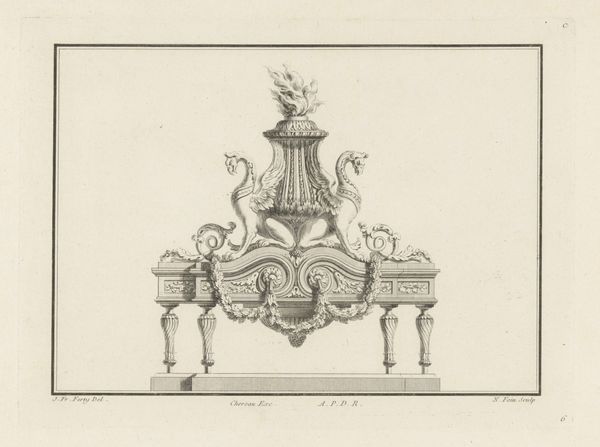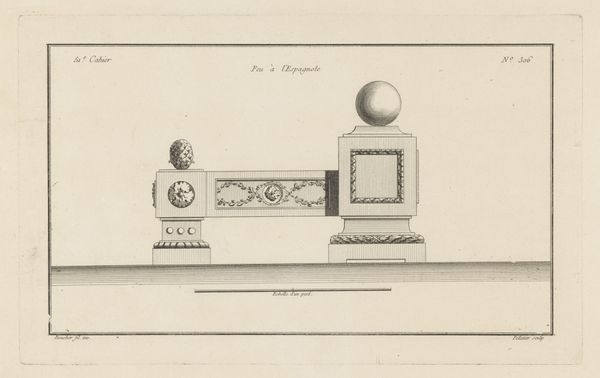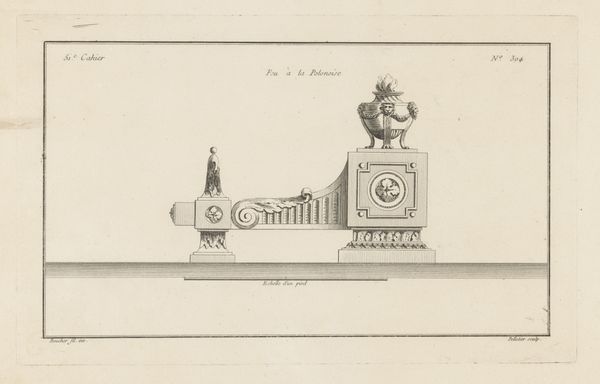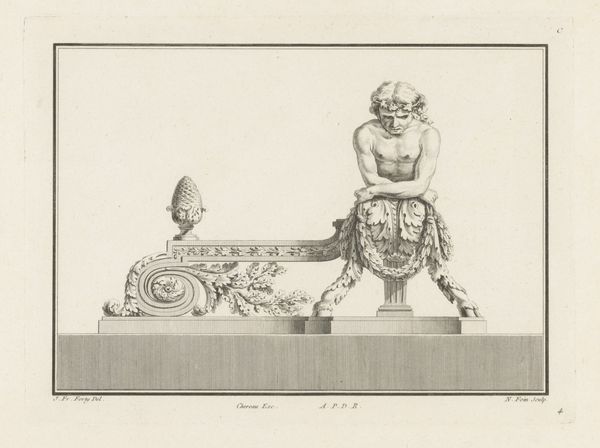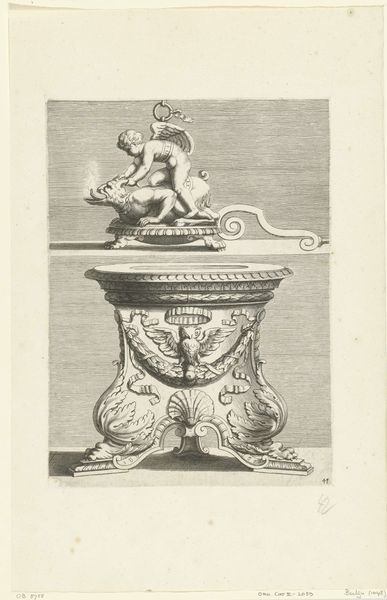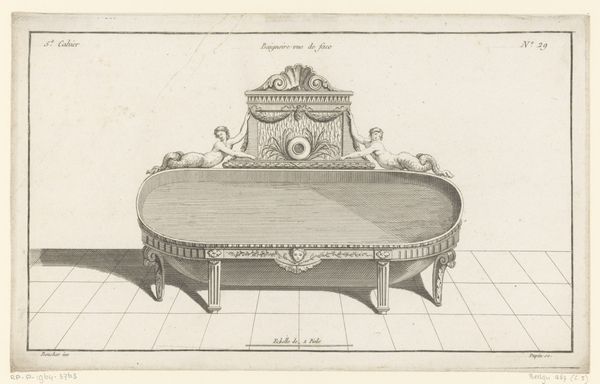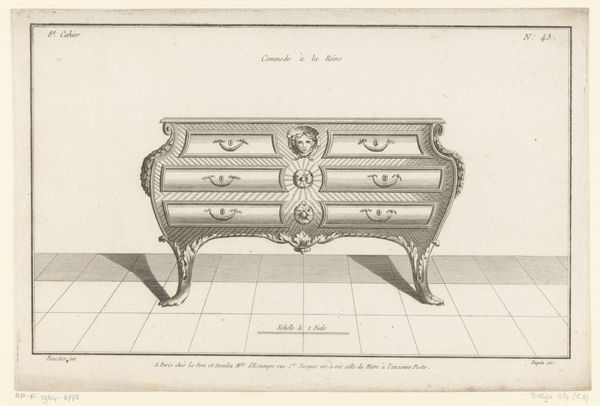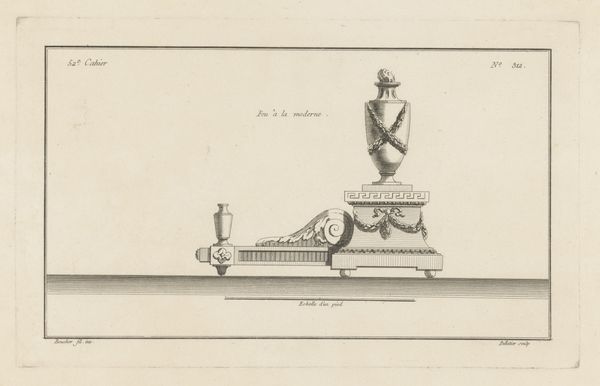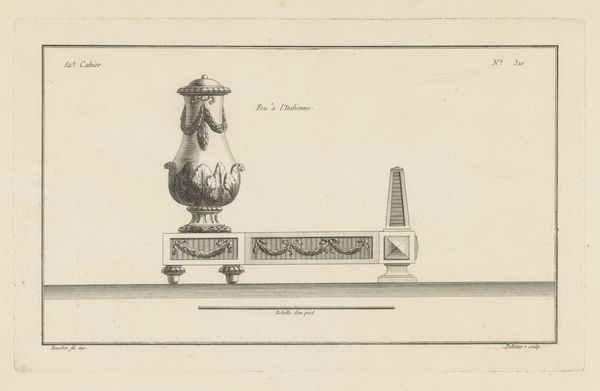
drawing, print, engraving
#
drawing
#
neoclacissism
# print
#
form
#
geometric
#
19th century
#
line
#
history-painting
#
engraving
Dimensions: height 206 mm, width 332 mm
Copyright: Rijks Museum: Open Domain
Jean Pelletier made this print of a fire dog with vase and sphinx sometime in the 18th century. Here we see the confluence of classicism and the decorative arts. The sphinx evokes ancient Egypt and Greece, while the flaming vase suggests domesticity and warmth. The print was produced during a period of increasing trade and cultural exchange between Europe and the Middle East. This led to a renewed interest in classical antiquity, which in turn influenced the decorative arts. Fire dogs like this would have been status symbols for wealthy Europeans, reflecting their erudition and refined taste. We see the kind of design that would have been produced and consumed by an elite social class that had the wealth to spend on the art. Catalogues and prints like these would have been important tools to disseminate visual information to architects, designers, and potential clients. By studying the social and economic context in which an artwork was produced, we can gain a deeper understanding of its meaning and significance. To do so, we must draw upon a wide range of historical sources.
Comments
No comments
Be the first to comment and join the conversation on the ultimate creative platform.
